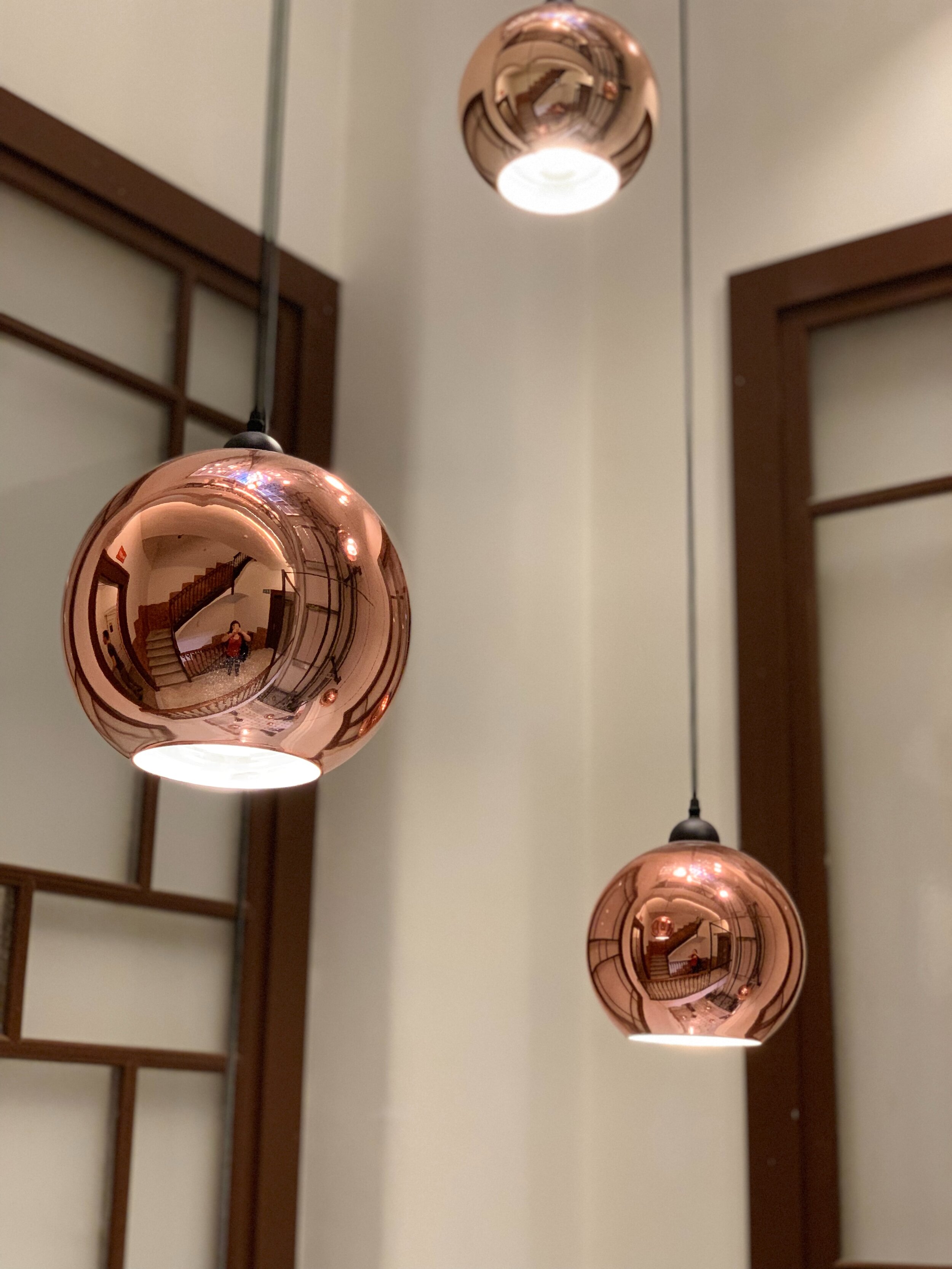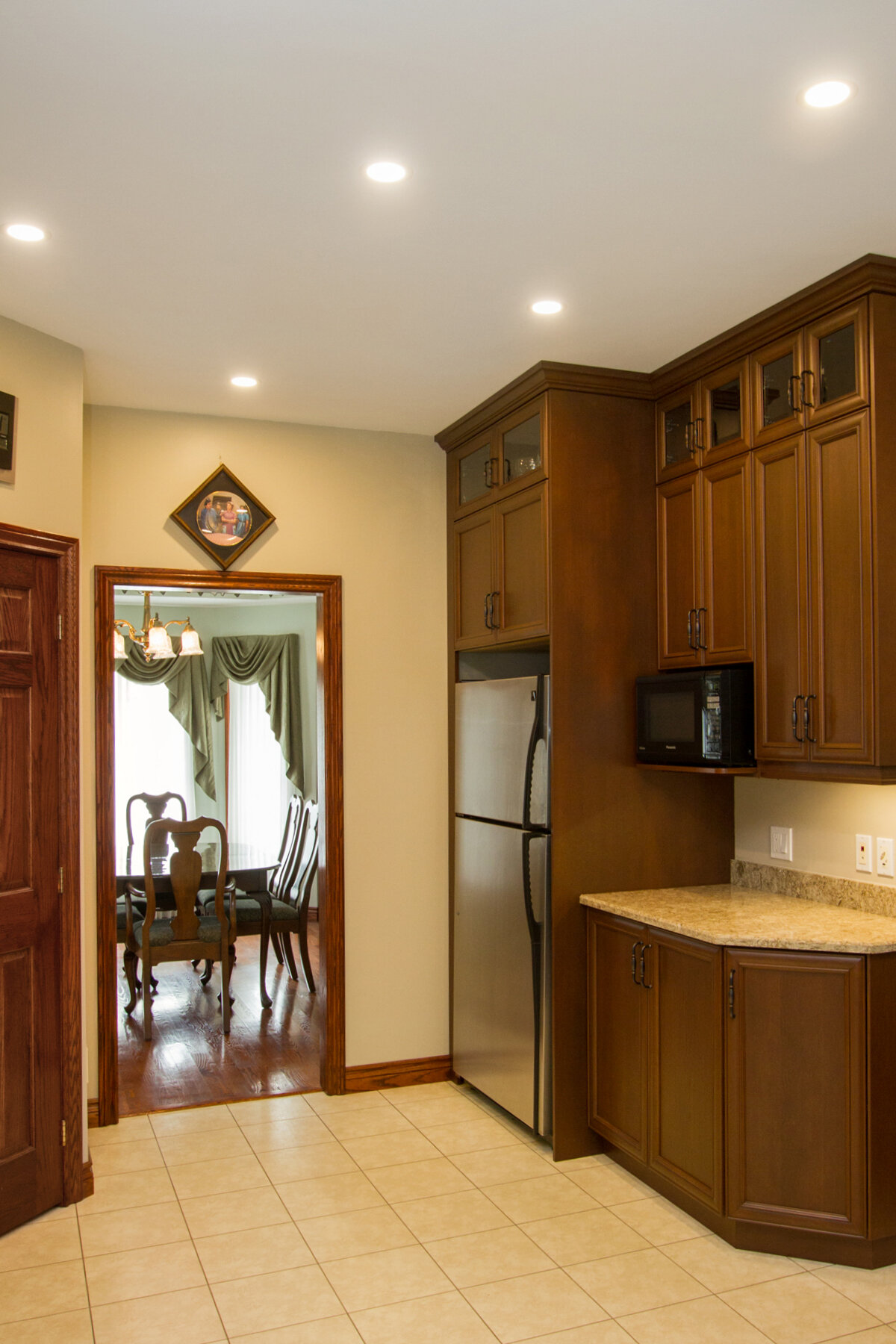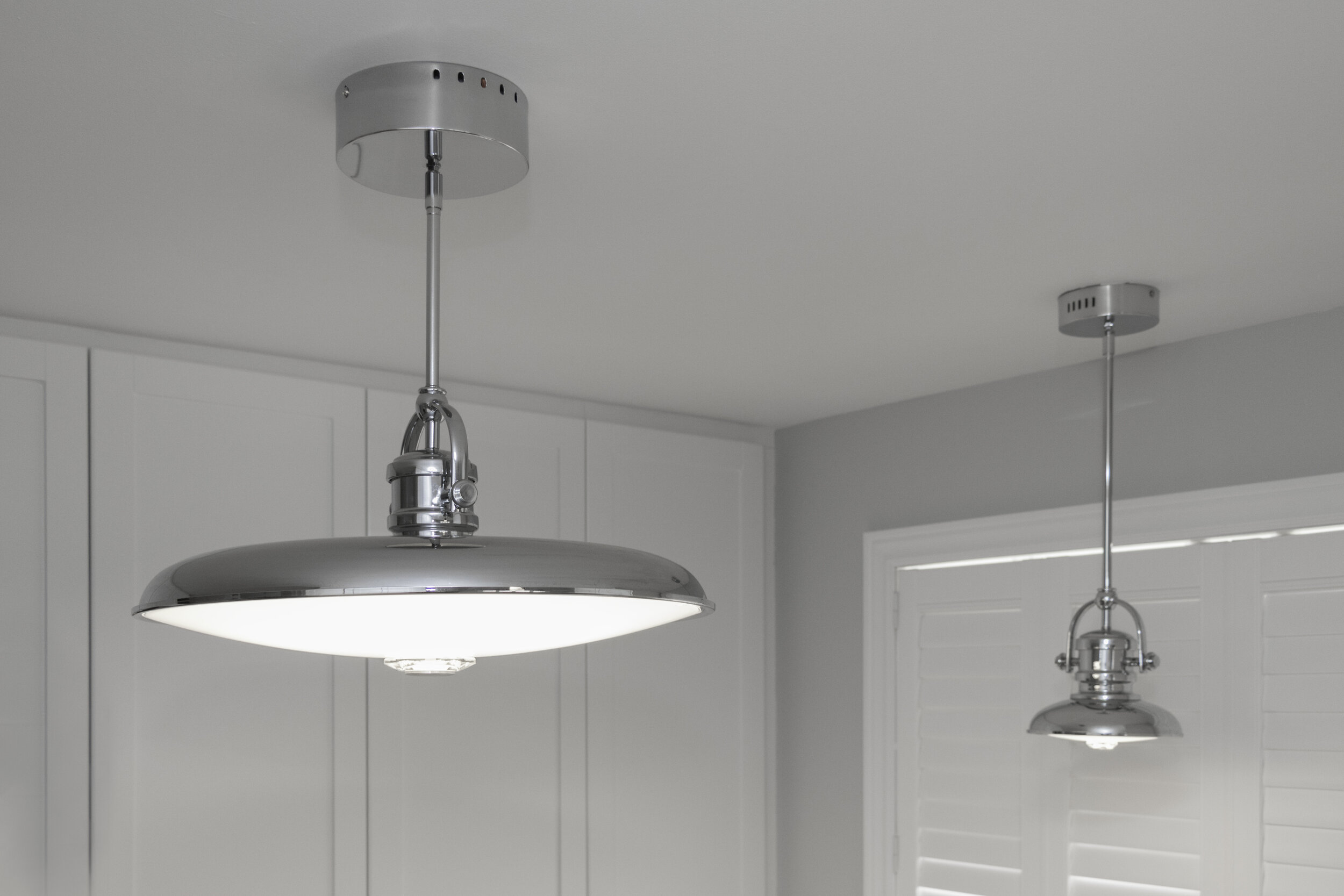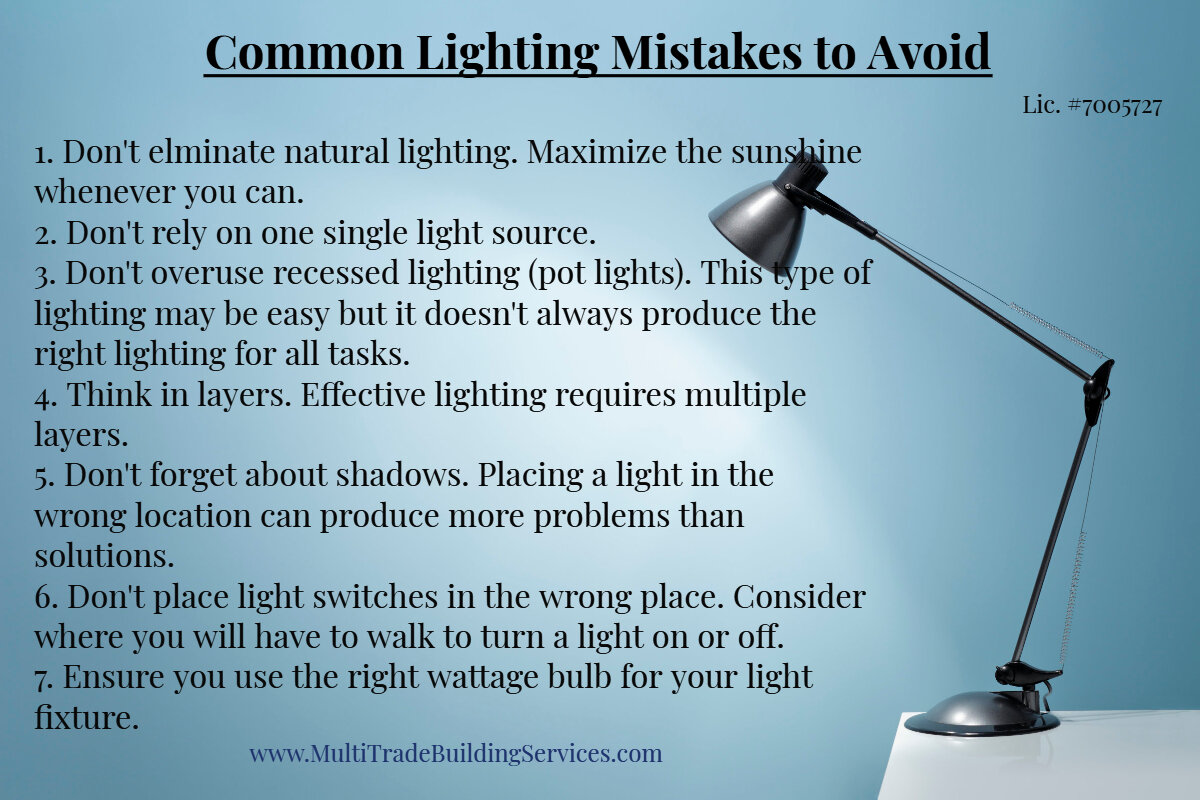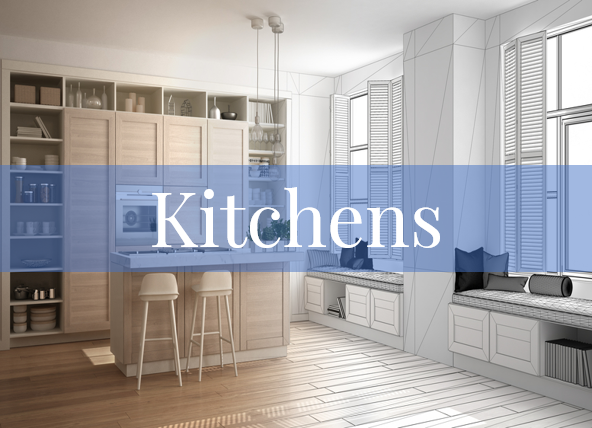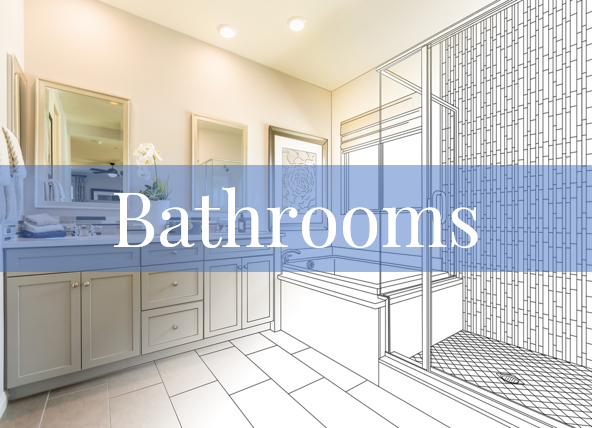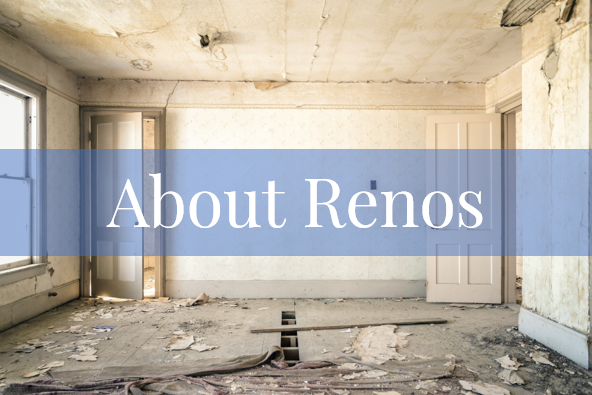Types of Lighting - When and Where to Use Each
/The right lighting can really make the difference in a renovation project. Too much or too little can even make the room feel uncomfortable. Bathrooms or kitchens can easily be too dark, or the lights can be too big or too small for the room. There are many factors to consider when selecting light fixtures for your home. We explore some of them here and help you better understand where each type of lighting should be used.
Prefer to listen?
Lighting is a necessity, but it’s also a major decorating element. Lighting has two purposes: to help people see better and to enhance the decor. There are three types of lighting, and your home should reflect a balance of these three types: general, decorative, and task lighting.
General/Ambient Lighting
General lighting is the light that produces the overall illumination in the room. This might be a central ceiling fixture, valance lighting, diffused pot lights, or cove lighting. General light should be uniform and create no strong highlights or deep shadows.
Task Lighting
Task lighting is intense, directed light that aids specific activities such as cooking, reading, shaving, etc. Although task lighting can come from walls or ceilings, it is often lamp lighting. In essence, task lighting is utilitarian lighting with a distinct purpose.
Decorative/Accent Lighting
Decorative lighting is light that isn’t really needed to aid vision. This can be light from a spotlight that accents artwork, pot lighting inside a cabinet, or sconce lights that add more style than light. Your overall goal with lighting up your home should be to have a comfortable level of overall illumination, adequate reading lighting near comfortable chairs, and working light at desks and countertops.
Directing Light
As well as the three types of lighting you need to consider, there are also different types of light directions you want to consider.
Diffused Light: This is nondiretional light that is cast by a bulb enclosed on all sides by a translucent white globe. This is soft, scattered light that is not directed at any particular object or surface. This is general lighting, and an example would be a ceiling-mounted light fixture in a bedroom.
Direct Light: This is focused light. It is usually cast downward and will strike objects and surfaces directly. It can be task or decorative lighting, such as pendant lights over a kitchen island.
Indirect Light: This light is intended to be reflected. It is often light thrown upward toward walls and ceilings, where it is diffused and bounced back as general light. Many wall sconce lights direct light upward to the ceiling.
Semidirect light: This is mostly direct lighting with a smaller part that’s reflected as indirect. Semidirect lighting has the greater portion of the light beamed downward. Wall sconces with an opalescent glass globe are an example.
Semi-indirect light: This light is mostly reflected, but some parts of the light source also provide a smaller amount of direct light. Most of this light is beamed upward. Semi-flush-mount lights like those you would find in hallways and stairwells are examples of this type of lighting.
One of the mistakes we often see with lighting is using too high a wattage bulb. For a free infographic telling you what each of the wattage bulbs is best suited for, click here. No email address is required. This is a free download.
2700K, 3000K, 4000K, and 6500K—What Do They Mean?
This is our most commonly asked question when it comes to pot lights. Here is a general guide:
2700K has a similar colour appearance to incandescent lamps and is a warm, relaxing colour.
3000K has a similar colour appearance to halogen lamps, with a warm but crisper colour than 2700K. Commonly called ‘warm white’.
4000K is a cooler, whiter colour than 2700K and 3000K. It’s the lamp that has traditionally been used in offices, waiting areas, and most commercial applications. This is commonly called ‘cool white’, or occasionally ‘neutral white’.
6500K is a very cool white that is used to simulate daylight. It is also said to increase productivity when used in a work environment. It is commonly referred to as ‘daylight’.
Typically, 3000K and 4000K are what are commonly used in home applications.
The warmer colours work well in more relaxed environments with warmer colour decoration, such as in living rooms, restaurants, and hospitality areas.
The cooler colours work well to help create a lively environment with lighter colour decoration, such as in kitchens, offices, warehousing, and retail spaces.
How the Type of Lighting Affects the Way You See Colours
When considering what type of bulb to use in your lighting, don’t forget that colours will look very different in different types of lights. If your walls are painted in rich reds, yellows, and other earth tones, you will most likely need a warmer light source. If they’re painted in blues, greens, or other vibrant colours with cool undertones, a brighter, cooler light source is your best bet.
Rooms with darker colours painted on the walls tend to absorb more light than rooms with light-coloured walls and tend to look dull if the lighting is not bright enough. The brighter the lighting, the more the true colour of your walls will stand out. However, the dimness or brightness of your room and how it reacts to colour are all matters of personal preference.
To avoid disappointment when selecting your colours, test samples in the room in which they will be used. Ensure you look at your colours in the morning, afternoon, and evening, with the lights on and off. Ensure your choices look good under all conditions. We had one client who selected an unusual stain colour for his kitchen cabinets. Under different lighting conditions, the cabinets looked either taupe or olive green. We did a sample for him on his wood choice (maple) to ensure he was happy with the magic of his selection in different lighting conditions.
How Your Decor Preferences Can Affect Your Choice of Lighting
Lighting choices will be very different in a traditional space versus a contemporary space versus a modern space. For example, our 70-year-old male client wanted new lighting throughout his home, which was decorated in a very classic, traditional style. To keep with the same style, we suggested a traditional chandelier over the dining room table, table and floor lamps in the formal living room, and a standard ceiling fixture together with table lamps in the bedroom. Alternatively, our 40-year-old client, who prides herself on her contemporary home, opted for LED pot lights throughout with square brushed nickel trims. The only other type of light fixture was a very contemporary-style large hanging light fixture in the main entrance.
Look at magazines, Pinterest, Google searches, and inside lighting stores to get a feel for what you like. Your lighting choices should reflect your style and values, but they should also be consistent with the decor in your home. If you aren’t comfortable making the selection on your own, talk to your contractor or set up a consultation with an interior decorator who can help you with your selection. Each contractor and designer will have different policies, but don’t expect the consultation to be free unless you are hiring them to do work for you outside of selecting your lighting. At Multi Trade Building Services, we offer our consultations for free to our existing clients for the projects we are completing for them. However, if someone just wants a consultation with us, we are happy to oblige, but there is a fee.
Mistakes to Avoid When Selecting Lighting
There are some mistakes to avoid when deciding on lighting for your home. In summary, below is a quick list to keep in mind when planning your next lighting project.


